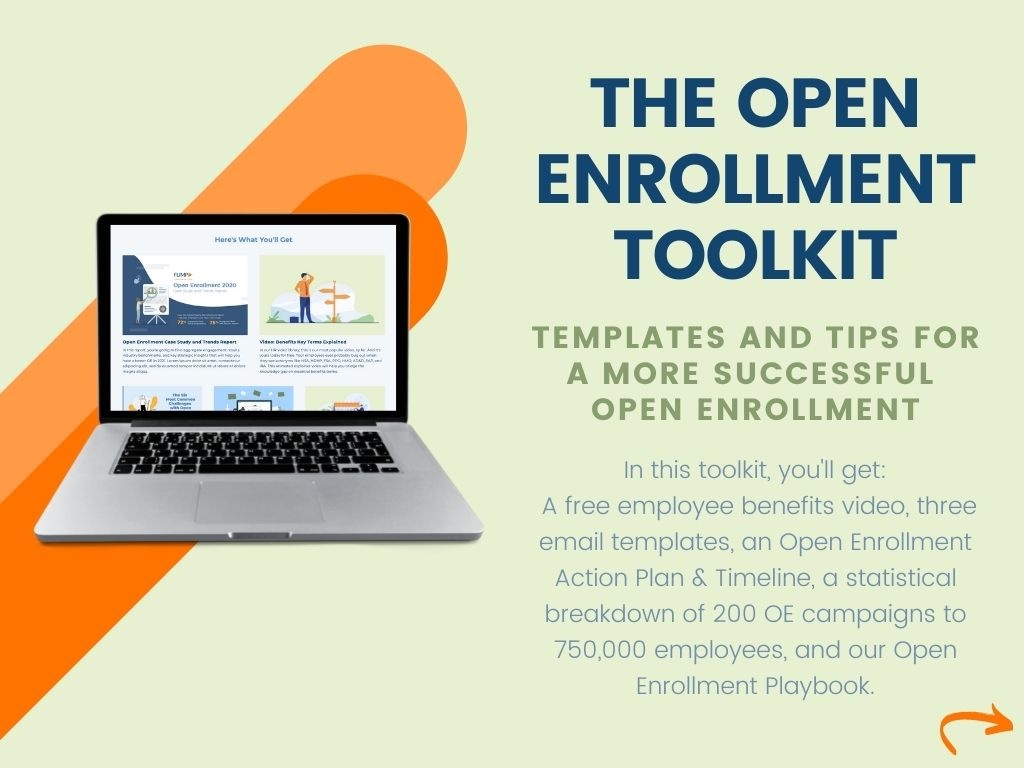As an HR professional, it can sometimes feel like you spend the entire year gearing up for open enrollment. Yet, no amount of preparation seems to be enough to prevent the chaos, confusion, and stress that inevitably occurs when open enrollment arrives.
For the typical HR professional, open enrollment means sending emails that go unread, answering the same questions over and over again, and hounding employees to meet their enrollment deadlines.
The benefits you and your team spend months carefully researching, choosing, and introducing to your employees are passed over in favor of familiar alternatives — which are often less affordable for employees and your company.
How can you make all the hard work you do preparing for open enrollment feel less like wasted effort and more like setting the stage for a productive and orderly enrollment process? How can you communicate critical benefits information to employees who have little time and inclination to research benefits?
A smoother benefits enrollment experience is possible — for you and your organization’s employees. Here are five practical tips for ensuring that this year, finally, all your preparation for open enrollment will have been worth it:
1. Start Communicating Early — and Keep It Up Year-Round
In many organizations, employees hear very little — if anything — about their benefits until the fall, when they receive a barrage of emails and handouts describing their options for the coming year, the decisions they must make, and open enrollment deadlines. This leaves an extremely limited window during which employees must consume the information, understand it fully, and make their choices.
A year-round communications strategy keeps benefits top-of-mind for your employees and gives them ample time to digest information about new benefits, leading to better-informed decisions.
Communicating year-round doesn’t necessarily mean a constant flood of wordy emails. Instead, you can release information in bite-sized updates tied to whatever is relevant at that time of year. Our Benefits Communications Calendar for HR teams offers an easy-to-emulate model for doing just that.
2. Tighten Up Your Emails
The average white-collar worker receives around 120 emails per day and spends more than a quarter of the workday reading and answering email — which means the average worker’s tolerance for yet another long-winded email is fairly low. Communications experts recommend crafting your emails to contain 200 or fewer words.
This can seem like a daunting challenge when you have complex benefits information to share. Nevertheless, you’ll have a better chance of getting your message across if you restrain your emails to essential information only. Multiple focussed emails (delivered year-round, as described above) will be more effective than one or two very long emails.
If you feel like you can’t carve your message down any more than you already have, don’t worry. We’ve got three open enrollment email templates for you to drive engagement before and during open enrollment. Each email template clocks in at under 200 words.
3. Use Video to Connect With Busy, Distracted Employees
If email isn’t getting your employees’ attention, try video. Visual content has a way of breaking through the noise and resonating with employees in a way that plan documents and email often fail to do.
48% of employees consider video to be the most engaging communication form. Younger employees — including millennials, the largest generation in the modern workforce — are accustomed to viewing video reviews and explainers before making major financial decisions. Benefits need not be any different.
Video production can be expensive, but fortunately, you don’t have to start your benefits enrollment videos from scratch. Flimp 360’s ever-expanding HR and Employee Video Library currently includes over 75 ready-made videos covering topics ranging from health insurance options to financial wellness to voluntary benefits (in English and Spanish).
(One of the most popular videos in our library explains key health insurance terms. Access it for free here.)
4. Centralize Benefits and Enrollment Information
For an HR professional, one of the most frustrating aspects of open enrollment is that employees often don’t even seem to understand the basics, such as where to learn about their plan options.
We’ve already described the problem with email. Printed pamphlets and papers create clutter and often wind up in the recycling bin. (Even disorganized people deserve good benefits.)
The solution is to centralize all the information employees need to make informed enrollment decisions within one easy-to-access online portal.
However, keep in mind that your benefits portal should not add to your employees’ confusion. The portal should be focused, with simple navigation.
Read more about building a benefits microsite and schedule a demo here.
5. Offer a Decision-Support Tool
Don’t you wish you could sit with each employee, walk them through their benefit options, and help them choose the optimal plans? Of course, neither you nor the employees have time for that.
A decision-support tool offers the next best thing — or, perhaps, an even better thing. A decision-support tool is like having an HR team member available 24/7 to guide employees through their enrollment decisions. The best decision-support tools use a data-driven approach to recommend the best and most affordable plans to employees with a minimum of intrusive questions.
For example, PLANSelect makes accurate estimates and plan recommendations in under five minutes by tapping into a claimant database with over 200 million data points.
Can a decision-support tool help your organization improve benefits enrollment? Read your free decision-support ebook to discover how the right decision-support tool can reduce health care costs, streamline open enrollment, and make your employees happier and healthier.








